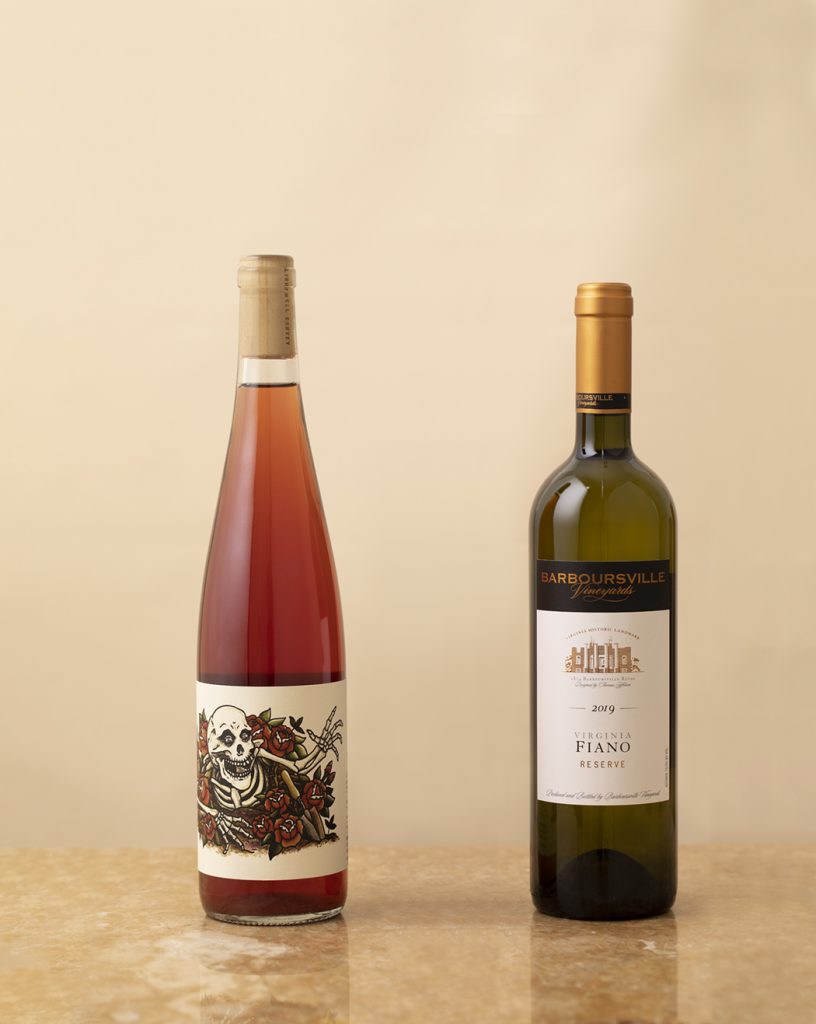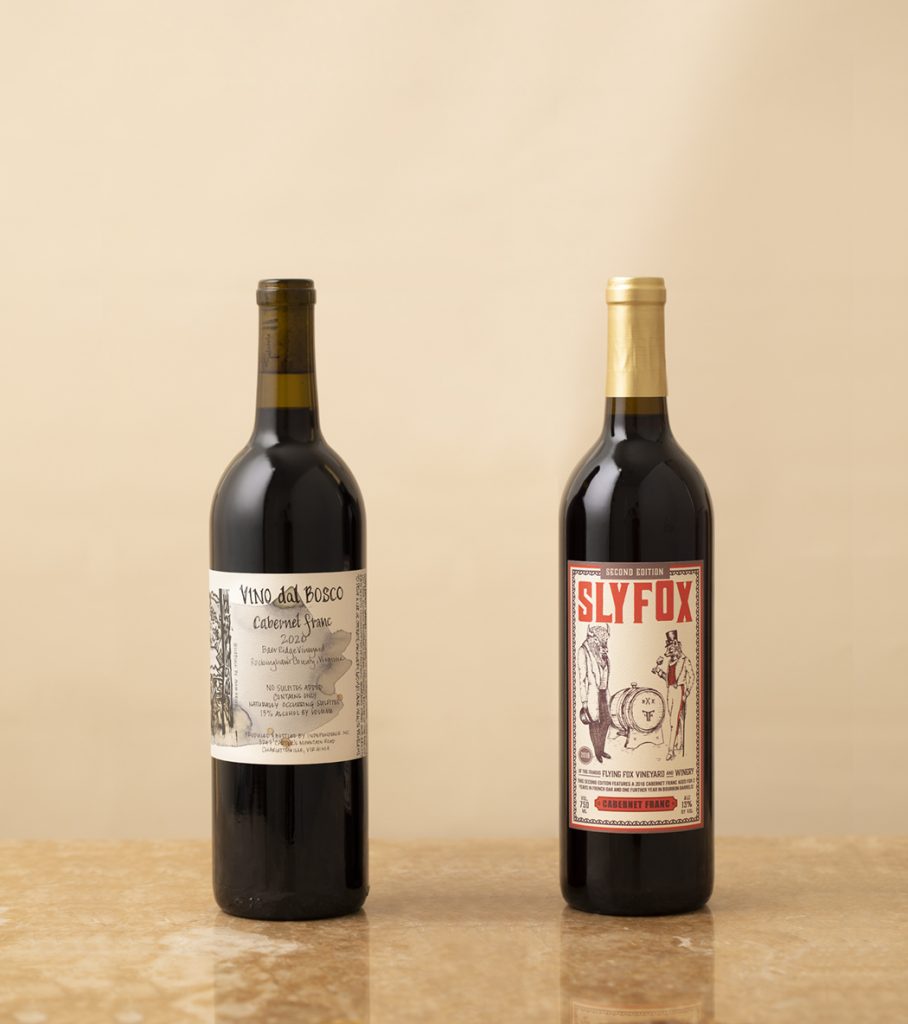There is much to look forward to as the Virginia wine industry matures, and as more and more high-quality wines are produced. Varieties such as cabernet franc and petit manseng are becoming recognized as grapes that flourish in the region. But a growing industry also gives space for smaller producers, new grape varieties, and creative winemaking techniques that result in interesting bottles that may give a glimpse of things to come. Here are five you shouldn’t miss.

2020 Strange Hybrid Moments from Lightwell Survey ($25)
How it tastes: Red fruits and perfumed roses on the nose. The palate carries this forward with strawberries, roses, and a hint of white pepper and tar on the finish. A touch darker and more flavorful than most rosés with persistent acidity on the finish.
Pair it with: Blackened fish, fried chicken, sushi
Notes: A blend of vidal blanc, chambourcin, blaufränkisch, petit manseng, and traminette. Winemaker Ben Jordan is focused on the potential of hybrid grapes (vidal blanc, chambourcin, and traminette) as part of the future of Virginia wine and showcases them here in this singular blend.
2019 Fiano Reserve from Barboursville Vineyards ($25)
How it tastes: Very floral nose leading to flavors of grapefruit, apricot, and pear. Balanced with lingering acidity and a hint of white peaches on the finish.
Pair it with: Grilled seafood, pasta with cream sauce, goat cheese
Notes: Barboursville first released its Fiano in 2015, and was the first winery on the East Coast to produce wine from this ancient variety originating in central Italy. The 2019 vintage was an excellent one in Virginia and this bottle is perhaps the best Fiano from Barboursville to date.

Amélie Sparkling Rosé (non-vintage) from Keswick Vineyards ($25)
How it tastes: A darker rosé-style sparkling wine. Red and black cherry flavors dominate with lingering tartness on the finish.
Pair it with: Stir-fry mushrooms, pork tenderloin, roasted duck
Notes: Made from norton, the only wine grape native to America. Although Missouri claims it as its state grape, Virginia had the first plantings of this variety. Like many, Keswick winemaker Stephen Barnard freely admits that he does not like the flavors of norton as a red wine, but he crafts an enjoyable rosé sparkling from the variety.

2020 Cabernet Franc from Vino dal Bosco ($25)
How it tastes: Fresh, bright flavors of red berries along with plum, green herbs, and a hint of licorice. A medium-bodied wine that would benefit from a slight chill and evokes a walk in the forest during autumn.
Pair it with: Braised pork stew, black beans and rice, roasted quail, burgers off the grill
Notes: A product of Gabrielle Rausse Winery, where sons Peter and Tim are largely responsible for the winemaking. The Vino dal Bosco label highlights wines with no added sulfites. The cabernet franc was aged half in stainless steel and half in clay amphora.
2018 Sly Fox Cabernet Franc from Flying Fox Vineyards ($40)
How it tastes: Aging in used bourbon barrels yields a combination of red fruits and spiciness with vanilla, coffee, biscuit, and smoke. The palate is rich and full of flavor with slight sweetness.
Pair it with: Barbecued ribs, steak, smoked vegetables, your favorite cigar
Notes: Sly Fox is the experimental label of Flying Fox Vineyards and gives the winery permission to play with some non-standard techniques. Winemaker Emily Pelton takes the opportunity here to do something that is perhaps a bit controversial, but unique and creative—and full of flavor.
